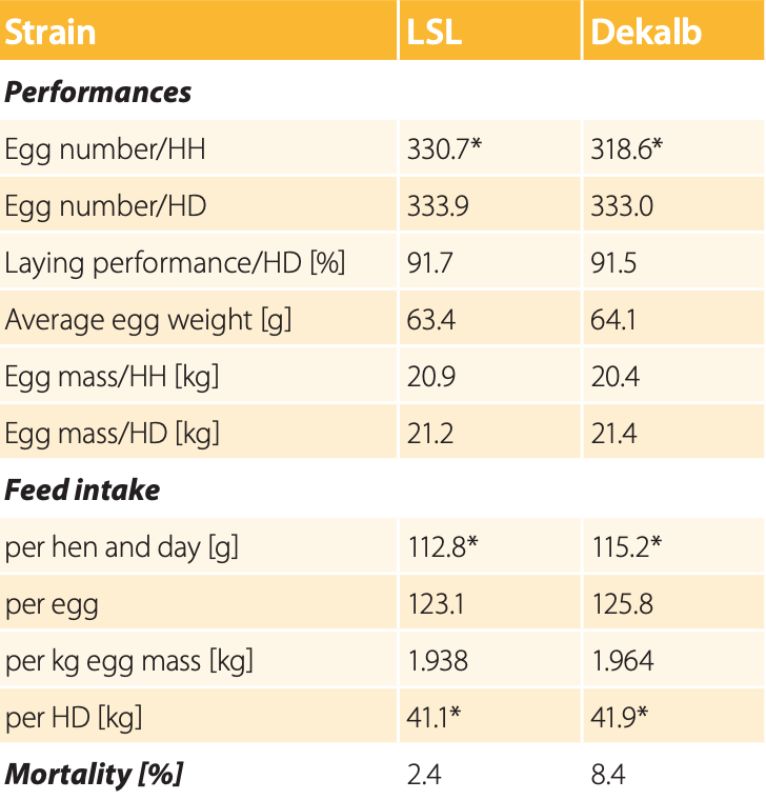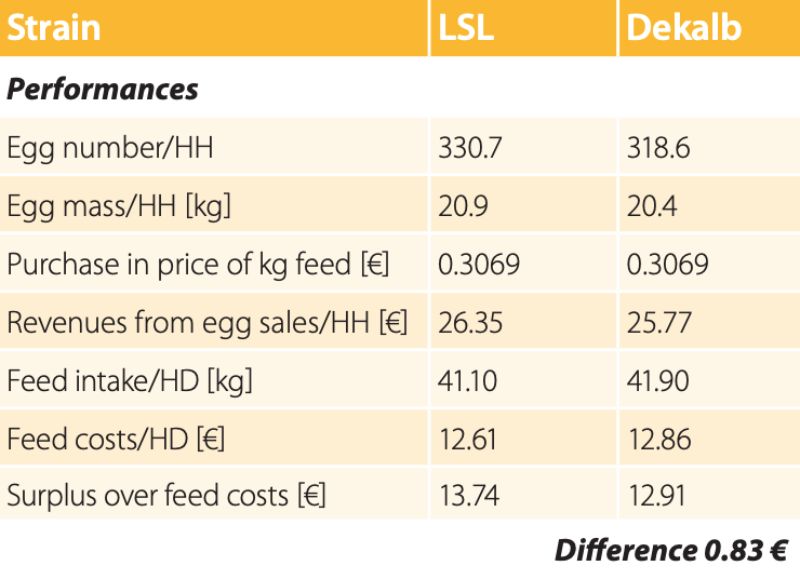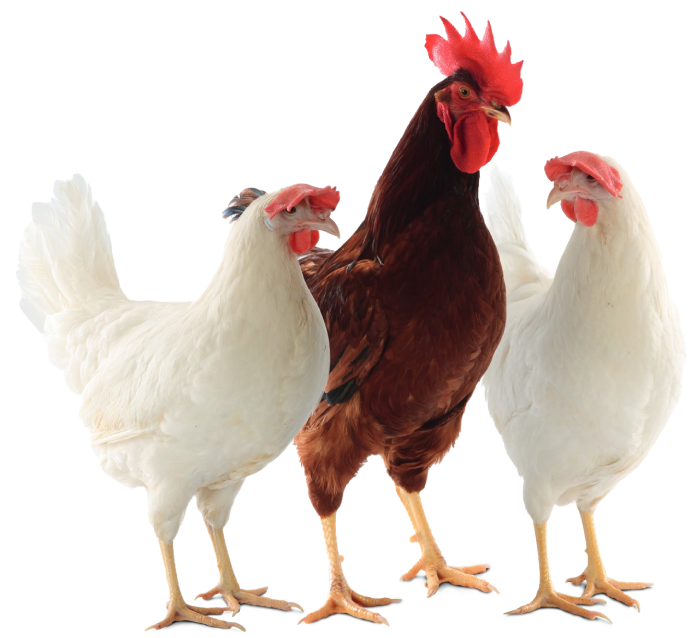German Random Sample tests for layers are based on two
state-owned testing stations in North Rhine Westphalia and
Bavaria. Worldwide, additional testing stations are located
in the Czech Republic, North Carolina (USA) and Japan. These
tests supply comparable figures of performance and behaviour traits which are captured under standardised conditions.
Therefore, breeding companies provide different strains, depending on the query of the testing stations. The tricky thing in this matter is always that none of the participants knows the results of these comparable tests in advance. However, Lohmann Tierzucht can be very satisfied with the results of the latest tests at Haus Düsse in North Rhine Westphalia.
The white layers tested were of Lohmann LSL and Dekalb White origin. They were housed in small aviaries for a production period of 364 days. In total, 252 layers of each strain were housed in seven compartments with 36 layers each. Due to the request of the testing stations, all layers were hatched in the same hatchery, reared together and transferred into the production units at 18 weeks of age under the same feeding and light regime.
The average laying performances in a production cycle of 364 days were above 91 %, thus very good for both strains. However, high mortality rates of Dekalb layers diminished egg numbers per hen housed (HH). The average egg number per HH was 331 for LSL hens which is 12 eggs more than the average for Dekalb hens. Despite the higher egg weight for Dekalb layers, the total egg mass production per HH was 0.5 kg lesser in Dekalb layers as compared to LSL layers. The feed intake was also higher for Dekalb layers. The calculated feed intake was at around 113 g for the LSL hens on a daily basis. In regard to 1 kg of egg mass produced, one LSL layer consumed an average of 1.99 kg of feed, whereas one Dekalb layer consumed 2.11 kg. With a purchase price of 30.69 €/dt of feed, the difference calculated in feed in take results in a difference of 0.25 € per HD. The surplus calculated over feed costs was 13.74 € for each LSL layer and 12.91 € for a single Dekalb layer. With these results, the LSL flock is significantly superior to the Dekalb flock.
High egg numbers, low mortality and the very good feed conversion ratio of LSL layers not only provide satisfaction for the farmer but they are economically interesting as well. Over the total production period of one year, these very good performances result in a surplus over feed costs of 0.83 € for LSL layers as compared to Dekalb hens!
Dr. Wiebke Icken and
Dr. Matthias Schmutz
Genetics
Table 1. Performance traits for white layers.

Table 2. Differences in LSL and Dekalb White layers; Surplus over feed costs.

* significantly different at p=0.05 Quelle: Hof&Feld, LZ 8-2014: 39-41 HH= hen housed; HD= hen day
Therefore, breeding companies provide different strains, depending on the query of the testing stations. The tricky thing in this matter is always that none of the participants knows the results of these comparable tests in advance. However, Lohmann Tierzucht can be very satisfied with the results of the latest tests at Haus Düsse in North Rhine Westphalia.
The white layers tested were of Lohmann LSL and Dekalb White origin. They were housed in small aviaries for a production period of 364 days. In total, 252 layers of each strain were housed in seven compartments with 36 layers each. Due to the request of the testing stations, all layers were hatched in the same hatchery, reared together and transferred into the production units at 18 weeks of age under the same feeding and light regime.
The average laying performances in a production cycle of 364 days were above 91 %, thus very good for both strains. However, high mortality rates of Dekalb layers diminished egg numbers per hen housed (HH). The average egg number per HH was 331 for LSL hens which is 12 eggs more than the average for Dekalb hens. Despite the higher egg weight for Dekalb layers, the total egg mass production per HH was 0.5 kg lesser in Dekalb layers as compared to LSL layers. The feed intake was also higher for Dekalb layers. The calculated feed intake was at around 113 g for the LSL hens on a daily basis. In regard to 1 kg of egg mass produced, one LSL layer consumed an average of 1.99 kg of feed, whereas one Dekalb layer consumed 2.11 kg. With a purchase price of 30.69 €/dt of feed, the difference calculated in feed in take results in a difference of 0.25 € per HD. The surplus calculated over feed costs was 13.74 € for each LSL layer and 12.91 € for a single Dekalb layer. With these results, the LSL flock is significantly superior to the Dekalb flock.
High egg numbers, low mortality and the very good feed conversion ratio of LSL layers not only provide satisfaction for the farmer but they are economically interesting as well. Over the total production period of one year, these very good performances result in a surplus over feed costs of 0.83 € for LSL layers as compared to Dekalb hens!
Dr. Wiebke Icken and
Dr. Matthias Schmutz
Genetics
Table 1. Performance traits for white layers.

Table 2. Differences in LSL and Dekalb White layers; Surplus over feed costs.

* significantly different at p=0.05 Quelle: Hof&Feld, LZ 8-2014: 39-41 HH= hen housed; HD= hen day






